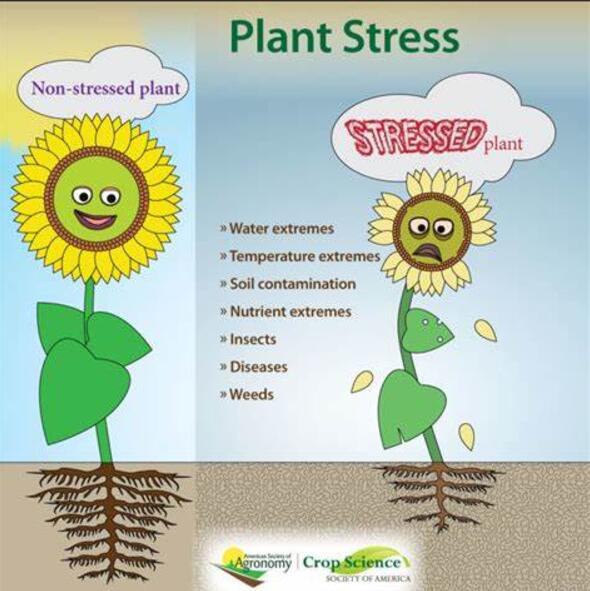RNA-seq of grafted near-isogenic soybean (Glycine max) lines reveals root genotype drives shoot responses to iron deficiency chlorosis
IF 6.8
Q1 PLANT SCIENCES
引用次数: 0
Abstract
Iron deficiency chlorosis negatively affects crop quality and yield. Studies of model species demonstrate long distance signaling from the shoot and local signaling in the root control iron stress responses in the root. However, recent whole genome expression studies of the iron deficiency chlorosis (IDC) tolerant soybean line Clark demonstrate the roots respond to iron stress earlier than the shoots, suggesting root control of iron stress responses in soybean. Further, the same biological pathways responded to iron stress in the roots and leaves, suggesting iron stress signaling occurs from root to shoot. To further investigate these findings, the current study used grafting of near-isogenic soybean lines Clark (IDC tolerant) and IsoClark (IDC susceptible) to demonstrate grafted shoots with a Clark rootstock have significantly greater SPAD scores than shoots with an IsoClark root stock in iron deficient conditions one and two weeks after iron stress.This confirms the Clark rootstock controls tolerance to iron deficiency chlorosis. Multiple previous studies demonstrate that Clark induces iron stress responses within an hour of iron stress exposure, well before iron stress phenotypes can be observed. Therefore, to provide evidence of signaling between roots and shoots we conducted RNA-sequencing (RNA-seq) analyses of leaves and roots from hetero- and homografted plants 30 and 120 min (m) after iron stress. We identified 518 and 846 differentially expressed genes (DEGs) in leaves and roots, respectively. At 30 m, DEG expression patterns in the leaves and roots were determined by the genotype of the tissue. By 120 m, DEG expression patterns in the leaves were determined by the genotype of the root. Grafts with a Clark rootstock induced iron uptake and utilization genes at 30 m in the root and by 120 m in the leaves, regardless of the leaf genotype. In contrast, grafts with a IsoClark rootstock were unable to induce iron uptake and utilization genes in the leaves in the same time frame. This provides evidence of a Clark mobile signal, initiated in the roots, that regulates iron stress responses in the leaves. We also provide evidence of an IsoClark shoot to root signal at 120 m that induces general abiotic stress responses, but unable to overcome iron stress conditions. Better understanding of the complex differences between crop and model species will aid in developing crops with improved IDC tolerance.
求助全文
约1分钟内获得全文
求助全文
来源期刊

Plant Stress
PLANT SCIENCES-
CiteScore
5.20
自引率
8.00%
发文量
76
审稿时长
63 days
期刊介绍:
The journal Plant Stress deals with plant (or other photoautotrophs, such as algae, cyanobacteria and lichens) responses to abiotic and biotic stress factors that can result in limited growth and productivity. Such responses can be analyzed and described at a physiological, biochemical and molecular level. Experimental approaches/technologies aiming to improve growth and productivity with a potential for downstream validation under stress conditions will also be considered. Both fundamental and applied research manuscripts are welcome, provided that clear mechanistic hypotheses are made and descriptive approaches are avoided. In addition, high-quality review articles will also be considered, provided they follow a critical approach and stimulate thought for future research avenues.
Plant Stress welcomes high-quality manuscripts related (but not limited) to interactions between plants and:
Lack of water (drought) and excess (flooding),
Salinity stress,
Elevated temperature and/or low temperature (chilling and freezing),
Hypoxia and/or anoxia,
Mineral nutrient excess and/or deficiency,
Heavy metals and/or metalloids,
Plant priming (chemical, biological, physiological, nanomaterial, biostimulant) approaches for improved stress protection,
Viral, phytoplasma, bacterial and fungal plant-pathogen interactions.
The journal welcomes basic and applied research articles, as well as review articles and short communications. All submitted manuscripts will be subject to a thorough peer-reviewing process.
 求助内容:
求助内容: 应助结果提醒方式:
应助结果提醒方式:


